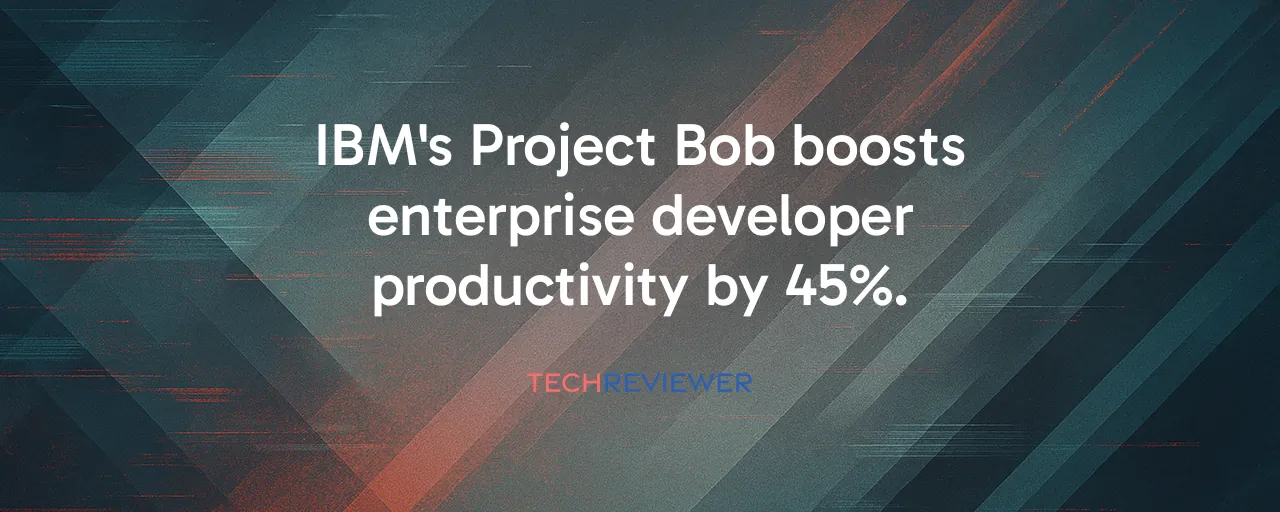A New Era for Enterprise Coding
Enterprise software development is a beast. Teams wrestle with sprawling codebases, legacy systems, and tight deadlines while juggling security and compliance demands. IBM's Project Bob, launched in October 2025 with Anthropic's Claude, steps into this chaos with a bold promise: make developers' lives easier without sacrificing quality. This AI-powered integrated development environment (IDE) delivers a 45% productivity boost, according to internal tests with over 6,000 IBM developers. It's built for the gritty reality of enterprise coding, where modernizing ancient systems and managing complex projects are daily hurdles.
Project Bob focuses on the nuts and bolts of enterprise needs, unlike flashy consumer tools. It automates tedious tasks like upgrading Java versions or refactoring massive codebases, all while keeping security and governance front and center. The tool stands out by understanding entire repositories, tracking dependencies and orchestrating multiple AI models to handle multi-step projects. For companies drowning in technical debt, this could be a lifeline.
Real-World Impact: IBM vs. Cursor
IBM's testing involved 6,000 developers over months across diverse projects, from mainframe updates to cloud migrations. The result was a 45% jump in productivity, with code commits rising 22% to 43%. That translates to faster delivery of features and fixes, saving time and money for firms where developer salaries are a major expense. For a 500-developer team, those gains could mean millions in annual savings.
Consider Cursor, another Claude-powered tool. Cursor's adoption by platforms like Windsurf and Replit shows its strength in rapid prototyping, with Claude Sonnet 4.5 scoring 77.2% on SWE-bench coding benchmarks. Cursor's focus remains on quick code generation for smaller teams. Project Bob tackles enterprise-scale challenges, like modernizing sprawling financial systems that handle 70% of global transactions through IBM mainframes. Cursor's $20 monthly Pro plan suits startups, while IBM's tool integrates with hybrid cloud setups, appealing to CIOs in regulated sectors like healthcare or government.
Balancing Speed With Security
Speed is great, but enterprise coding lives or dies by security. Research shows 45% of unchecked AI-generated code contains vulnerabilities, a scary stat for mission-critical systems. Project Bob addresses this head-on by embedding security scans and compliance checks into the workflow. Developers get real-time alerts on issues like cryptographic flaws, which affect 14% of AI outputs, per Veracode studies. This shift-left approach catches problems early, reducing the risk of breaches in sensitive industries.
Still, not everyone's sold. Some IT teams worry about the 'black box' nature of AI decisions, where tracing a bug back to its origin feels like chasing a ghost. Others question whether developers, especially juniors, might lean too heavily on AI, skipping critical validation steps. IBM counters this by emphasizing human oversight and governance tools, ensuring code quality remains a priority. For regulated sectors, where compliance with GDPR or FedRAMP is non-negotiable, this focus on accountability is a game-saver.
What's Next for AI in Coding?
Project Bob hints at a broader shift in how we build software. As AI coding tools evolve, they're moving beyond simple autocomplete to managing entire development lifecycles. IBM's partnership with Anthropic, including work on the Model Context Protocol, sets the stage for open standards that let AI tools play nicely across platforms. This could spark collaboration, with vendors like AWS or Azure integrating similar capabilities into their clouds.
But challenges loom. Scaling AI to massive codebases risks performance hiccups, and unclear pricing for Project Bob's full release raises budget questions. Plus, there's the human factor: will developers embrace AI as a partner or fear it as a job-stealer? The market's growing fast, 97% of developers used AI tools by 2024, per GitHub, and IBM's entry pushes the needle toward enterprise-grade solutions. As firms modernize legacy systems, tools like Project Bob could redefine efficiency, provided they balance innovation with trust.
